-
 Bitcoin
Bitcoin $113900
-1.39% -
 Ethereum
Ethereum $3517
-4.15% -
 XRP
XRP $3.009
1.59% -
 Tether USDt
Tether USDt $0.9997
-0.04% -
 BNB
BNB $766.8
-1.41% -
 Solana
Solana $164.6
-2.38% -
 USDC
USDC $0.9998
-0.02% -
 TRON
TRON $0.3277
0.65% -
 Dogecoin
Dogecoin $0.2023
-1.67% -
 Cardano
Cardano $0.7246
0.05% -
 Hyperliquid
Hyperliquid $38.27
-4.77% -
 Sui
Sui $3.528
-0.52% -
 Stellar
Stellar $0.3890
-0.73% -
 Chainlink
Chainlink $16.16
-2.69% -
 Bitcoin Cash
Bitcoin Cash $539.9
-4.38% -
 Hedera
Hedera $0.2425
-2.00% -
 Avalanche
Avalanche $21.71
-0.97% -
 Toncoin
Toncoin $3.662
5.73% -
 Ethena USDe
Ethena USDe $1.000
-0.02% -
 UNUS SED LEO
UNUS SED LEO $8.964
0.35% -
 Litecoin
Litecoin $107.7
2.33% -
 Shiba Inu
Shiba Inu $0.00001223
-0.40% -
 Polkadot
Polkadot $3.617
-0.97% -
 Uniswap
Uniswap $9.052
-2.49% -
 Monero
Monero $295.1
-3.79% -
 Dai
Dai $0.9999
0.00% -
 Bitget Token
Bitget Token $4.315
-1.85% -
 Pepe
Pepe $0.00001060
0.11% -
 Cronos
Cronos $0.1342
-2.72% -
 Aave
Aave $256.0
-0.87%
How do I use MetaMask to connect to a decentralized application (dApp)?
MetaMask connects you to dApps by sharing your public address, but never your private keys—always review transaction details before approving.
Aug 02, 2025 at 01:14 pm
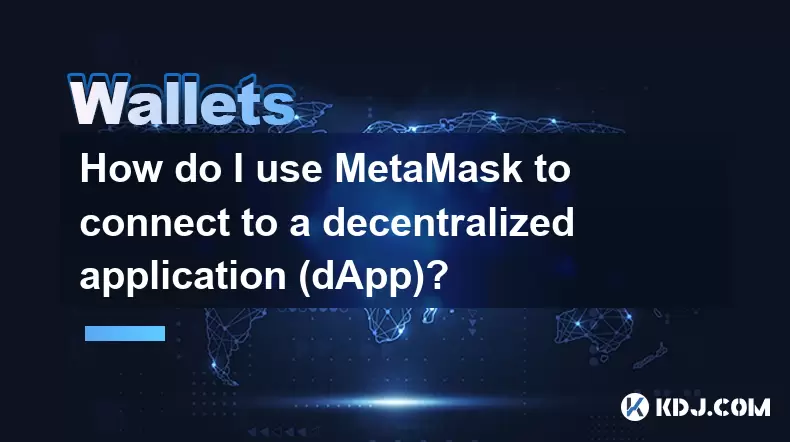
Understanding MetaMask and Its Role in dApp Interaction
MetaMask is a cryptocurrency wallet and gateway to blockchain applications, primarily on the Ethereum network. It functions as a browser extension and mobile app, enabling users to manage digital assets and interact with decentralized applications (dApps) seamlessly. When you use MetaMask to connect to a dApp, you're authorizing the application to read your public wallet address and, in some cases, request transaction approvals. This connection does not automatically grant the dApp access to your funds. The wallet operates by injecting a JavaScript provider (window.ethereum) into the browser, allowing dApps to detect its presence and initiate secure communication.
Before connecting, ensure that MetaMask is properly installed and configured. You can install it from the official website as a browser extension (Chrome, Firefox, Brave, etc.) or download the mobile app from app stores. After installation, create a wallet or import an existing one using your secret recovery phrase. Never share this phrase with anyone. Once set up, the MetaMask icon will appear in your browser toolbar, indicating it's active and ready for dApp integration.
Launching and Navigating to a dApp
To begin the connection process, open your preferred web browser with the MetaMask extension enabled. Navigate to the official website of the dApp you wish to use. Examples include decentralized exchanges like Uniswap, NFT marketplaces like OpenSea, or lending platforms like Aave. Always verify the URL to avoid phishing sites. Look for security indicators such as HTTPS and check community-verified links on platforms like Twitter or Discord.
Once on the dApp’s homepage, locate the “Connect Wallet” button. This is typically found in the top-right corner of the interface. Clicking it will trigger a pop-up modal listing available wallet options. Select MetaMask from the list. At this point, the dApp queries the browser for the presence of window.ethereum. If MetaMask is active, it responds, and the connection flow begins.
Authorizing Connection from MetaMask
After selecting MetaMask, a permission request window will appear from the MetaMask extension. This window displays the name of the dApp and requests permission to access your wallet’s public address. Review the dApp’s domain carefully to ensure it matches the site you are visiting. This step prevents malicious sites from impersonating legitimate dApps.
To proceed, click “Next”, then “Connect”. MetaMask will then share your public Ethereum address with the dApp. The dApp can now display your wallet balance, transaction history, and enable features like staking or trading. Importantly, the dApp cannot perform any transactions without your explicit approval. Your private keys remain securely stored within MetaMask and are never exposed.
Interacting with the dApp After Connection
Once connected, the dApp interface will update to reflect your wallet status. You may see your wallet address, token balances, and available actions. For example, on a decentralized exchange, you might see options to swap tokens, add liquidity, or claim rewards. Each of these actions requires a transaction on the blockchain, which must be confirmed through MetaMask.
When you initiate an action, such as swapping ETH for DAI, the dApp constructs a transaction and sends it to MetaMask for approval. A transaction confirmation window will pop up in the MetaMask extension. This window shows critical details:
- The network (e.g., Ethereum Mainnet, Polygon)
- The amount being sent and received
- The gas fee (transaction cost)
- The contract address interacting with your wallet
Carefully review all fields. If anything appears suspicious—such as an unknown contract or excessive gas fee—do not confirm. Click “Reject” to cancel. If everything is correct, click “Confirm” to broadcast the transaction to the network.
Switching Networks for Cross-Chain dApps
Many dApps operate on networks other than Ethereum, such as Polygon, Binance Smart Chain, or Arbitrum. MetaMask must be configured to the correct network to interact with these dApps. If the dApp detects a network mismatch, it will prompt you to switch.
To change networks:
- Click the network dropdown in the MetaMask extension
- Select the required network from the list
- If the network is not listed, choose “Add Network”
- Enter the Network Name (e.g., Polygon Mainnet)
- Input the New RPC URL (e.g., https://polygon-rpc.com)
- Set the Chain ID (e.g., 137)
- Define the Currency Symbol (e.g., MATIC)
- Add the Block Explorer URL (e.g., https://polygonscan.com)
- Click “Save”
After switching, refresh the dApp page. The connection should now proceed normally. Ensure you have the native token of that network (e.g., MATIC on Polygon) to pay for gas fees.
Disconnecting from a dApp
MetaMask does not provide a direct “Disconnect” button within the extension. To disconnect from a dApp:
- Click your wallet address within the dApp interface
- Select “Disconnect” or “Disconnect Wallet”
- This removes the dApp’s access to your public address
- Your transactions and assets remain secure
You can also clear site data through your browser settings to ensure no residual permissions remain. For added security, consider using MetaMask’s “Connected Sites” feature (found under Settings > Privacy & Security) to manually revoke access to specific domains.
Frequently Asked Questions
Can a dApp steal my crypto just by connecting MetaMask?
No. Merely connecting your wallet only shares your public address. The dApp cannot withdraw funds without your approval for each transaction. Always review transaction details in MetaMask before confirming.
What should I do if MetaMask doesn’t pop up when I click “Connect Wallet”?
Ensure the extension is installed and unlocked. Refresh the page. Check that the site is not blocked in MetaMask settings. Disable conflicting browser extensions like ad blockers temporarily.
Is it safe to connect MetaMask to any dApp?
Only connect to dApps from trusted sources. Verify the website URL, check community feedback, and avoid granting permissions to unknown contracts. Use tools like Etherscan or MetaMask’s phishing detection to assess safety.
Why does the dApp show zero balance after connecting?
Confirm you’re on the correct network in MetaMask. Switch to the network where your tokens are held. If the tokens are custom, you may need to manually add the token contract address in MetaMask under “Import Tokens.”
Disclaimer:info@kdj.com
The information provided is not trading advice. kdj.com does not assume any responsibility for any investments made based on the information provided in this article. Cryptocurrencies are highly volatile and it is highly recommended that you invest with caution after thorough research!
If you believe that the content used on this website infringes your copyright, please contact us immediately (info@kdj.com) and we will delete it promptly.
- Bitcoin, XRP, and the Price Drop Blues: What's Shakin' in Crypto?
- 2025-08-03 00:30:12
- Bank of America, Ripple, and RLUSD: A New Era in Digital Finance?
- 2025-08-03 00:30:12
- Bitcoin Strategy: Saylor's Not Hoarding, He's Building an Empire
- 2025-08-02 22:30:12
- Bitcoin Bloodbath: Macro Pressures and Liquidations Unleash Crypto Chaos
- 2025-08-02 22:30:12
- Tron, Cold Wallets, and Crypto Trends: What's Hot in the Market?
- 2025-08-02 23:10:12
- Bitcoin's Wild Ride: Davinci, Investors, and the $500K Dream
- 2025-08-02 23:50:12
Related knowledge

What is a watch-only wallet in Trust Wallet?
Aug 02,2025 at 03:36am
Understanding the Concept of a Watch-Only WalletA watch-only wallet in Trust Wallet allows users to monitor a cryptocurrency address without having ac...

How to switch between networks in Trust Wallet?
Aug 02,2025 at 12:36pm
Understanding Network Switching in Trust WalletSwitching between networks in Trust Wallet allows users to manage assets across different blockchains s...
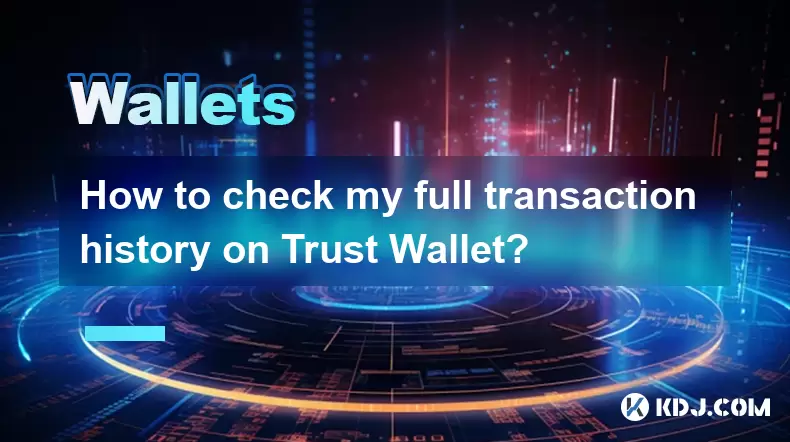
How to check my full transaction history on Trust Wallet?
Aug 02,2025 at 09:24am
Understanding Transaction History in Trust WalletTrust Wallet is a widely used non-custodial cryptocurrency wallet that supports a broad range of bloc...
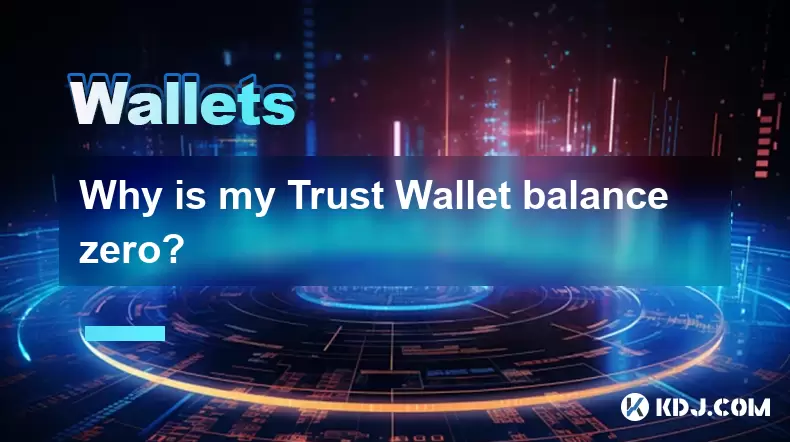
Why is my Trust Wallet balance zero?
Aug 02,2025 at 03:49am
Understanding Trust Wallet Balance Display IssuesIf you're seeing a zero balance in your Trust Wallet despite knowing you've previously received or se...
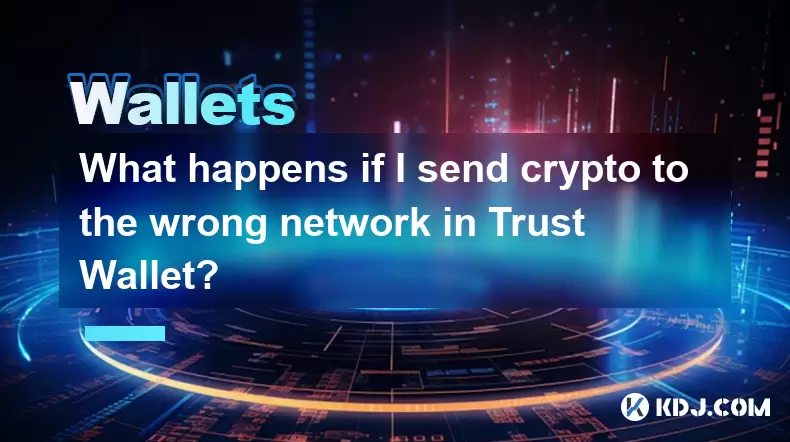
What happens if I send crypto to the wrong network in Trust Wallet?
Aug 02,2025 at 07:22pm
Understanding Network Compatibility in Trust WalletWhen using Trust Wallet, it's essential to understand that different cryptocurrencies operate on di...
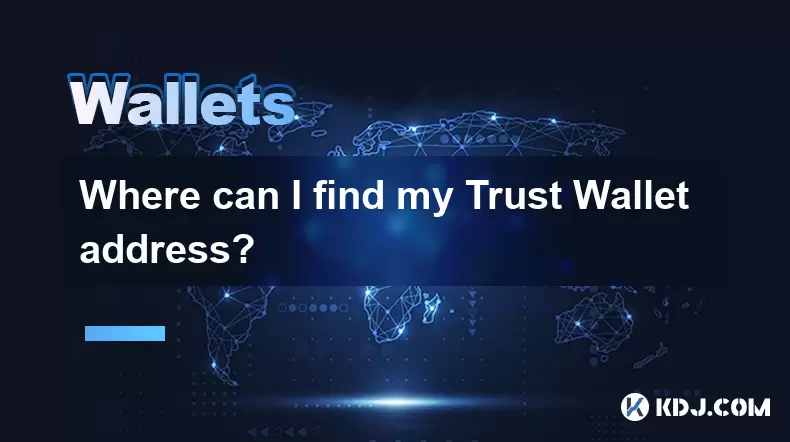
Where can I find my Trust Wallet address?
Aug 02,2025 at 06:07pm
Understanding Your Trust Wallet AddressYour Trust Wallet address is a unique identifier that allows others to send you cryptocurrency. It is a string ...

What is a watch-only wallet in Trust Wallet?
Aug 02,2025 at 03:36am
Understanding the Concept of a Watch-Only WalletA watch-only wallet in Trust Wallet allows users to monitor a cryptocurrency address without having ac...

How to switch between networks in Trust Wallet?
Aug 02,2025 at 12:36pm
Understanding Network Switching in Trust WalletSwitching between networks in Trust Wallet allows users to manage assets across different blockchains s...

How to check my full transaction history on Trust Wallet?
Aug 02,2025 at 09:24am
Understanding Transaction History in Trust WalletTrust Wallet is a widely used non-custodial cryptocurrency wallet that supports a broad range of bloc...

Why is my Trust Wallet balance zero?
Aug 02,2025 at 03:49am
Understanding Trust Wallet Balance Display IssuesIf you're seeing a zero balance in your Trust Wallet despite knowing you've previously received or se...

What happens if I send crypto to the wrong network in Trust Wallet?
Aug 02,2025 at 07:22pm
Understanding Network Compatibility in Trust WalletWhen using Trust Wallet, it's essential to understand that different cryptocurrencies operate on di...

Where can I find my Trust Wallet address?
Aug 02,2025 at 06:07pm
Understanding Your Trust Wallet AddressYour Trust Wallet address is a unique identifier that allows others to send you cryptocurrency. It is a string ...
See all articles

























































































